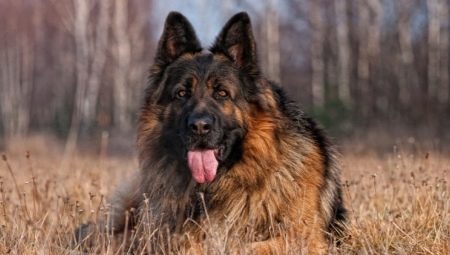The breed of a long-haired German shepherd was officially recognized 10 years ago with the participation of the International Association of Cynologists. Thanks to many advantages and useful characteristics of the genus, now it is a full-fledged community of animals participating in exhibition shows and breeding.
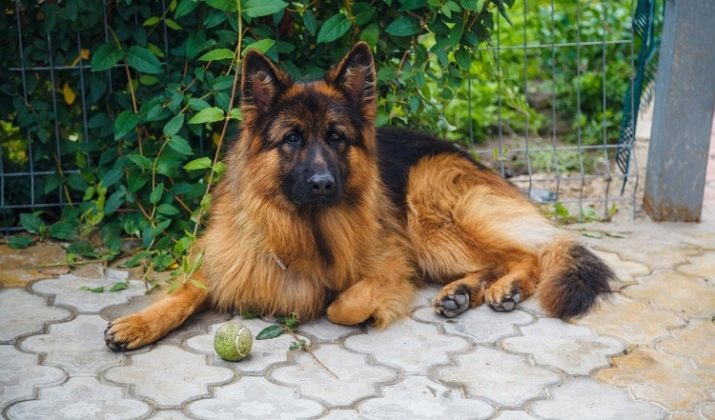
Origin history
Information about the first long-haired German shepherd dogs appeared in German chronicles of the 7th century, but then the color of these large and powerful dogs was bright. Much later, in the XVIII century, as a result of selection, dark suits began to appear, but they noticeably differed among themselves. Despite similar service qualities, some individuals had a more squat and massive type of addition, while others had a rather elegant and graceful skeleton.
Even then it was possible to distinguish in the shepherd dogs such valuable characteristics as strength, endurance, moderate aggressiveness, due to a balanced character. However, for a long time such animals were not recognized as a full breed because of the thick and long hairline, which is considered a drawback. They were given only a place in the pastures for the protection of livestock, as well as for the search and guard service.
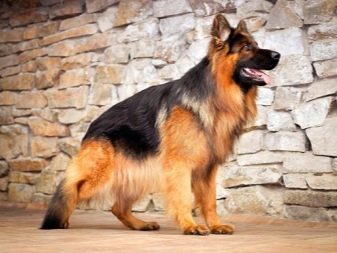
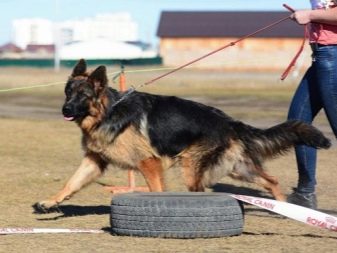
There was an erroneous opinion that the skin of an animal with such shaggy hair dries quickly, dries out for a long time, and, thus, aggravates and slows down the dynamics of the dog’s movements in comparison with its short-haired relatives. Therefore, breed standards were not set for them, shepherd dogs did not participate in exhibitions, as well as in breeding.
But time passed, thanks to the efforts of breeders, an averaged species of animals was bred, which fully corresponded to breed standards and was officially recognized in 2010 by experts as canine experts of the International Association. It has now been proven that long-haired puppies are the most viable, distinguished by strong immunity, strength, impeccable anatomy, in addition, they have a beautiful appearance. A long coat not only does not prevent them from fulfilling their duties, but also protects the dog’s body from hypothermia in severe frosts, as well as from hyperthermia in extreme heat.
Dogs also perfectly adapt to living in highland areas.

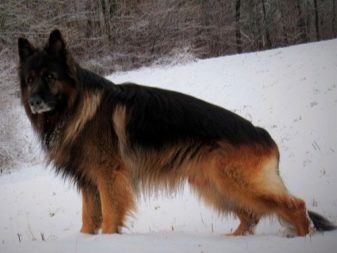
Breed description
In accordance with the standard, purebred representatives of German shepherds with long hair should have a strong, muscular, slightly elongated body, a head of the correct proportions with erect ears. The appearance of the animal is similar to that of the Shorthair German Shepherd. The wool has special requirements:
- more pronounced hair should be on the neck and chest;
- the hips, the tail area, the fossa behind the front paws can be very hairy and thick;
- on the paws themselves, the front of the legs, on the head, the hair should be short;
- parting on the back is desirable;
- the undercoat, including the lower back, is weakly expressed.
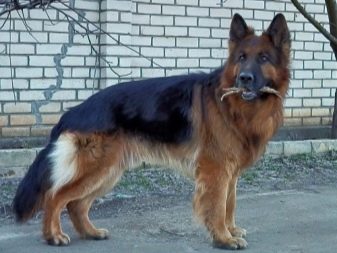
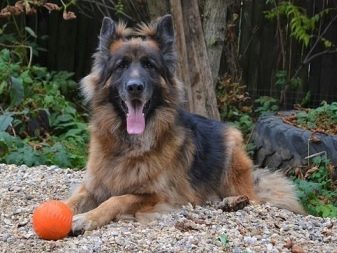
Based on the established rules, the dog’s coat should be thick, long, shiny, and not too snug to the skin, not counting the muzzle. The thoroughbred shepherd dogs also differ in the type of hair - in one species, the hair is hard and coarse, not adjacent to the body. The second type has a softer coat - light and fluffy. A shaggy German shepherd has an almond-shaped eye shape, usually a black shade. Visually, it seems that they mow a little, but the look in the animal is expressive, clean and lively. Also the dog is distinguished by:
- long, powerful croup;
- large, deep sternum;
- massive neck;
- correct bite (scissors);
- developed, long joints of the limbs;
- middle-length tail, continuing the line of the spine, and more hairy in the lower part;
- the legs of the animal are always parallel to each other, but the hind legs are slightly set back;
- black nose (animals with light and brown coloring of nasal skin are subject to rejection).
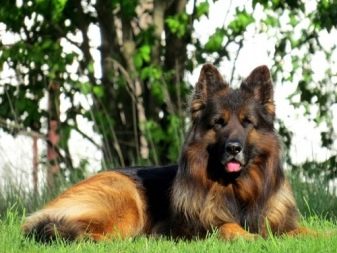
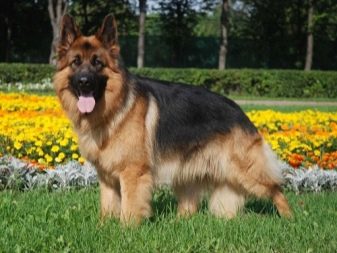
The growth of males at the withers is from 60 to 65 cm, the female of the animal is slightly lower - 55-60 cm. Their body weight, respectively, in males is up to 40 kg, and in girls - no more than 32 kg. The life span of the animal is 10-14 years. The main colors are black with gray, red, yellow, red or gray with a black mask on the face.
By standard, dogs of black color are allowed - with a red tint or a deep, bright chocolate color. The color is called so because of the dark tone zone on the sides and back of the shepherd, as it were, forming a cheprak (saddle). It is this mantle that can have such excellent brown and reddish hues in the representatives of the breed.
Harmonious build, dexterity, instant reaction, excellent instinct and strength are qualities that help a furry shepherd to be an indispensable guard, bloodhound, guide, rescuer and companion of a shepherd.
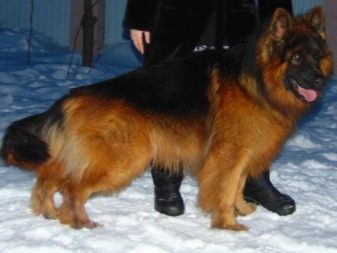

Nature and behavior
Representatives of the breed can be dramatically different in nature. There are dogs with a frenzied temperament that cannot sit still. The owner will have to devote a lot of time to walks and official activities with such a choleric pet, because only significant physical exertion can bring him into a balanced state. The beast will have to literally be exhausted by training, so that he carries out commands and is obedient. Otherwise, the shepherd will daily arrange pogroms in the house, chew on furniture and perform other unseemly acts from excess energy.


In relation to the owner's family, such dogs are the sweetest creatures belonging to the household with sincere affection. It is interesting that phlegmatic animals in general can not show any feelings and react indifferently to the environment, while the choleric loves to be stroked, tries to show his love, but in some situations it can also show dissatisfaction with a growl.
Shepherd can be trained, but compared to a regular German shepherd, making it harder. In addition, the process of education and training may be complicated due to fear of the animal. Fearless by nature, the dog may experience an insurmountable fear of frightening it in puppyhood, so the baby should be protected from negative impressions.
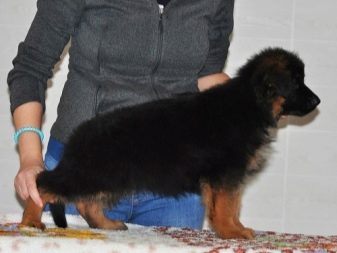
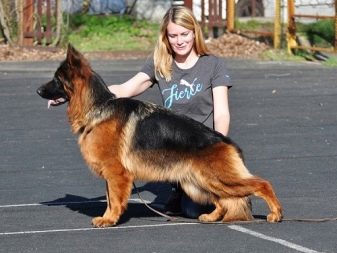
Advantages and disadvantages
The shiny, long and magnificent coat of the animal is an undoubted advantage of its appearance, makes the dog elegant and even majestic, in addition, the shepherd has other advantageous qualities:
- the animal is distinguished by great intellectual capabilities, it lends itself well to training and training;
- both males and females are unpretentious in relation to the diet;
- keeping and caring for a pet is not particularly difficult;
- attachment and devotion to the owner is one of the best qualities of a thoroughbred animal;
- An equally important quality is the dog’s ability to be useful in various types of performance.
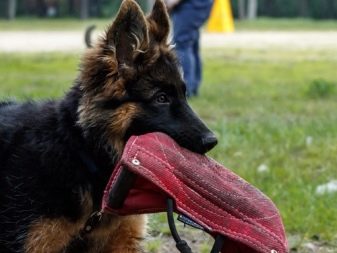
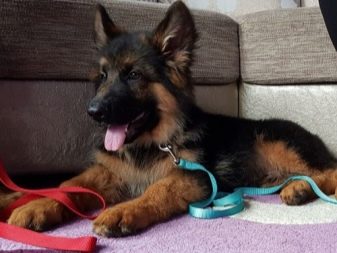
A good reaction and a natural mind allow the animal to clearly distinguish between moments when rest ends, games, and work begins. This is facilitated by such a character trait as poise. The breed also has disadvantages.
Wool, of course, considered a pet decoration, requires periodic combing, and during moulting, this must be done every day. This minus should be considered when choosing a long-haired puppy. The disadvantages include long walks that help the beast splash out its energy and emotions, relative aggressiveness, some genetic anomalies that provoke diseases. The shepherd must be trained and raised from an early age, otherwise the beast may become uncontrollable.
In addition, the service dog must work, this will make him disciplined and more obedient.
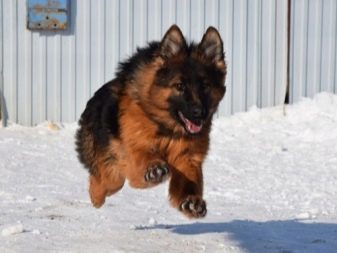

How to choose a puppy?
The owner’s desire to get a true friend is understandable, so many try to acquire dogs at a very young age. However, from the litter, the breeder will be able to take the puppy only a month after birth. To do this is undesirable in principle, since in the future the animal may show indifference and even aggression towards other animals. The optimal purchase age is 2.5 months.
Especially valuable are completely black furry puppies or individuals with a distinctive black mask.
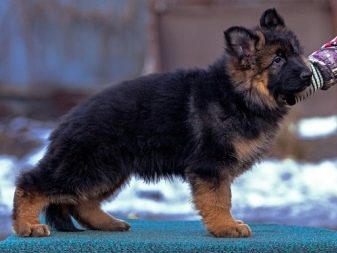
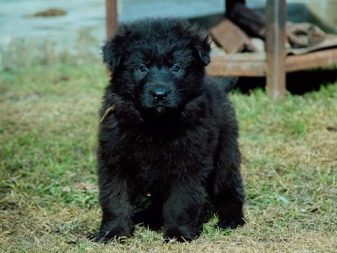
You can verify the absence of malformations and pedigree of the baby by carefully examining it. A healthy two-month-old puppy has straight, straight legs, a large proportional muzzle, a tail with no thickening, ears lowered (they will rise in 3-3.5 months). The presence of defects may be indicated by:
- elongated, elongated body;
- excessively wide forehead with a narrow muzzle;
- scratching behind the ears;
- small jaw;
- twisted paws.
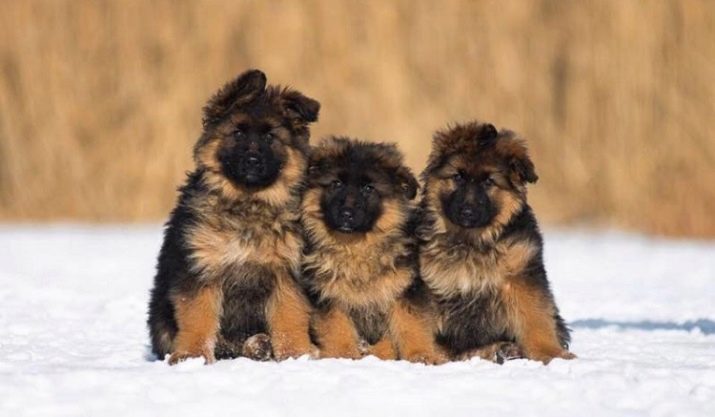
A correct bite with two minor flaws is allowed, in the future they will disappear. The weight of the puppies is also subject to study. A healthy boy weighs about 3-4 kg per month, a girl - 2-3 kg. If you have to take a two-month-old puppy, you should know that the weight of the male will be already 7-8 kg, and the females will be 6.5-7 kg.
You should not take young animals whose pedigree has at least one ancestor with hip dysplasia, especially when it comes to breeding. It also does not hurt to check the baby’s vision, condition of the nervous system.
If he has a swollen abdomen, diarrhea, or a dull coat, there is a risk of acquiring a whipped dog.
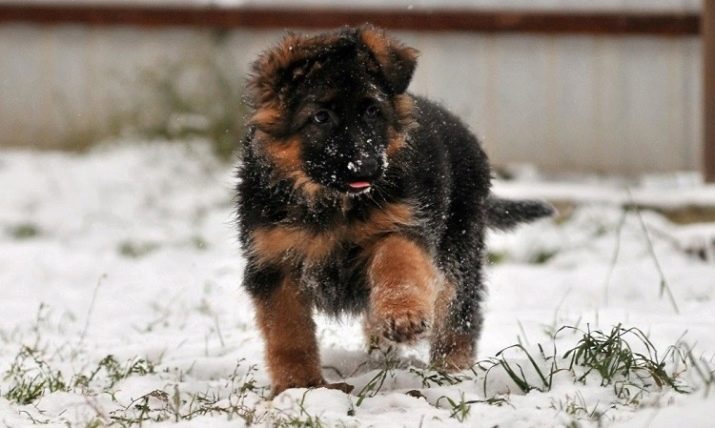
Maintenance and care
Like any large dog, a long-haired shepherd the conditions of a private house are more suitable, where a spacious room or aviary is allocated to it, since in urban housing she feels like a captive of a small, enclosed space that can result in depression or aggression. The case ends with gnawed furniture, household items, in a word, property damage, and this is bad for everyone - the animal and the owner.
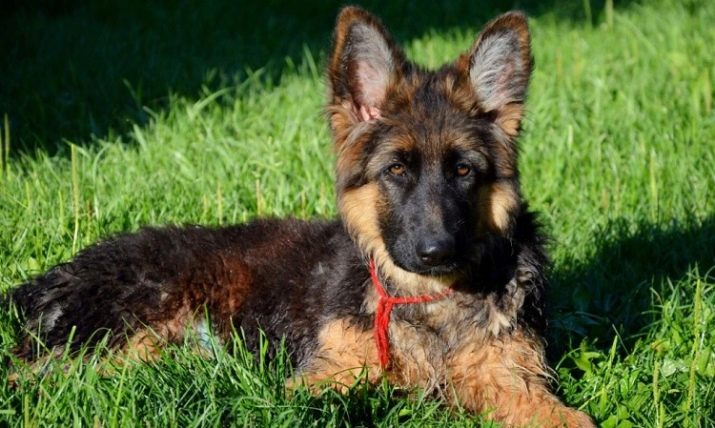
Caring for a shepherd dog is quite simple, but you need to take care of the animal constantly.
- A regular examination of the nose, ears, eyes and teeth of the pet is necessary. If necessary, eyes and ears are wiped with a cotton swab with a disinfectant liquid, teeth are cleaned with toothpaste preparations designed for dogs or gnawing toys that eliminate plaque and stone.
- A shepherd is bathed once every 3-4 months or with severe contamination, using a special shampoo taking into account the type of skin, including especially sensitive ones.
- It is necessary to comb out the wool several times a week so that it does not stray, forming mats. Daily comb the dog during molting.
Each walk with the animal should last at least 2 hours, and at a fast pace with a leash in tightness - this is important to strengthen the muscles of the hind legs of the pet.


Feeding
The owner has the right to decide how to feed the shepherd - natural food or industrial food. But it is better to listen to the recommendations of the veterinarian on this issue - like humans, animals have their own physiological characteristics, including the sensitivity of the gastric tract or a predisposition to allergic reactions. When choosing natural food, the main products of the menu should be:
- fresh lean beef, turkey or veal;
- cereal cereals - rice, buckwheat;
- raw and boiled vegetables - cabbage, pumpkin, carrots, as well as greens;
- dairy products - cottage cheese, kefir, unsweetened, natural yogurt;
- some fruits and berries - cherries, strawberries, apples;
- as a treat - crackers made of wheat bread.
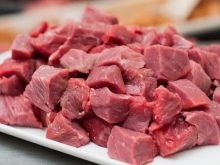


Shepherd dog It is strictly forbidden to give oatmeal, sweet dishes, smoked delicacies, sausage, but you’ll need fortified supplements, calcium, fish oil.
Ready-made feed for the animal should be selected in accordance with its large size and preferences from the premium food category.
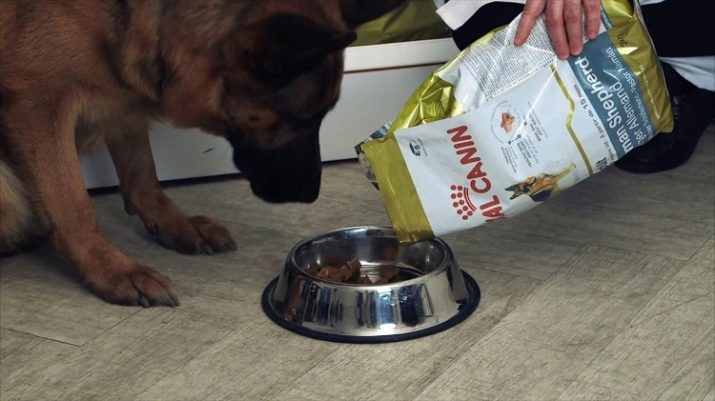
Parenting and training
A long-haired German shepherd is a smart animal, which can only be raised by a person with a strong will and character. You need to start education from the first days of the appearance of a pet in the house. With all the love felt for the baby and tenderness at its sight, the dog must be firmly put in place if it does not obey, is capricious, or commits wrong actions. So the shepherd can understand who is in charge in this house, and for her - the leader.
Every day the dog is trained, including classes for mental development in the program. Since the pet can quickly forget the acquired knowledge, this must be done constantly. You should immediately warn family members about the prohibitions set for the dog and strictly monitor their implementation.
The dog should not growl at the owner, chew on things of people, climb on a bed or sofa. If necessary, begging will also be required - thoroughbred animals also suffer. A number of prohibited acts include an attack on other animals, people, barking at pedestrians and cars passing by. If you can’t cope with the animal on your own, you can always teach him the rules of good behavior, using the services of an experienced dog handler.
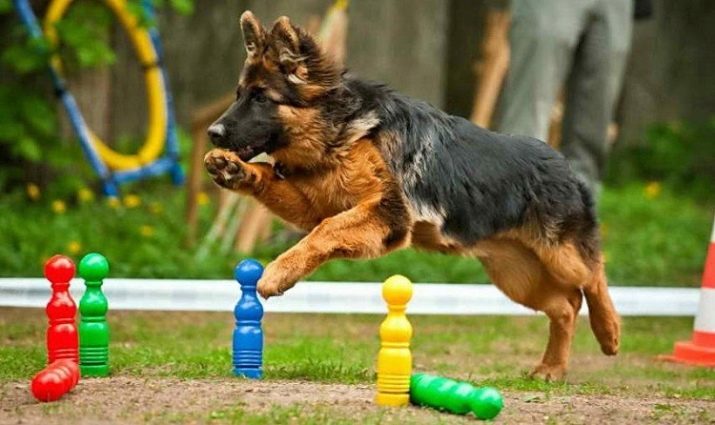
You can learn about how to start training a German Shepherd puppy by watching the video below.
